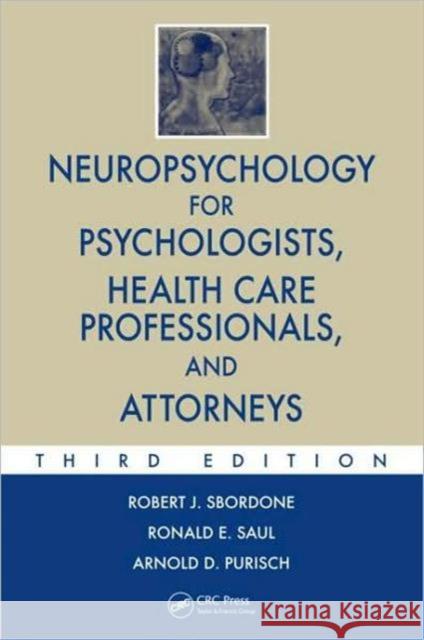Neuropsychology for Psychologists, Health Care Professionals, and Attorneys » książka
Neuropsychology for Psychologists, Health Care Professionals, and Attorneys
ISBN-13: 9780849373091 / Angielski / Twarda / 2007 / 542 str.
Extensively revised and expanded, this third edition of Neuropsychology for Psychologists, Health Care Professionals, and Attorneys provides a clear, concise, and comprehensive discussion of neuropsychology, outlining its purpose, use, and historical development. It covers the anatomy of the brain, a wide variety of neurobehavioral disorders, comprehensive neuropsychological examinations, ecological validity, and the strengths and limitations of many widely used neuropsychological and diagnostic tests. Maintaining a high degree of detail and sophistication, this book enables an in-depth comprehension of the topic even by those with no prior knowledge in this area.
Beginning with a definition and overview of neuropsychology and the role of the neuropsychologist, this third edition expands the section on neuroanatomy to describe subcortical and ganglionic structures, cerebellum and white fiber tracts, and the pathophysiology of neurobehabehavioral disorders. It covers mild and severe traumatic brain injuries, postconcussion syndrome, posttraumatic stress disorder (PTSD), frontal lobe disorders, executive dysfunction, and seizure disorders. The authors introduce new findings on age-related cognitive changes, neuropsychological and physiological correlates of PTSD, Alzheimer's and late onset dementia. New chapters include malingering of neuropsychological deficits and deception, the limitations of neuropsychological tests, and how to critique the interpretation of neuropsychological test data and reports.
Emphasizing a systematic approach to neuropsychological testing and assessment, this book evaluates a wide range of neuropsychological and neurodiagnostic tests in terms of their strengths, limitations, validity, and reliability. It critically examines different methods of test scoring and interpretation discussing the ecological validity of neuropsychological testing and the extent to which neuropsychological tests can detect neurobehavioral deficits and brain damage. The author provides numerous illustrative case studies and six sample medico-legal reports along with three appendices offering a glossary of terms, a list of widely prescribed medications, and a quick-reference summary of the tests detailed in the book.











